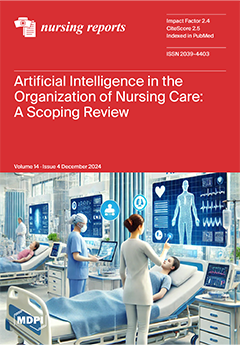Background/Objectives: Extensive research has emphasised the persistent challenges and failures in providing hospitalised patients with fundamental evidence-based nursing care, often resulting in grave consequences for patient safety. Recommendations from implementation research indicate that a tailored theory- and research-based implementation strategy targeting contextual
[...] Read more.
Background/Objectives: Extensive research has emphasised the persistent challenges and failures in providing hospitalised patients with fundamental evidence-based nursing care, often resulting in grave consequences for patient safety. Recommendations from implementation research indicate that a tailored theory- and research-based implementation strategy targeting contextual determinants can optimise the implementation of evidence-based clinical practice for the benefit of patients. This study evaluated the feasibility of an implementation strategy designed to improve the quality of nursing care by targeting behavioural and environmental barriers in a hospital setting.
Methods: Proctor’s conceptual model for implementation was applied to evaluate the strategy based on eight outcomes: adoption, acceptability, appropriateness, fidelity, feasibility, penetration, sustainability, and costs. Data collection methods included field observations, informal and focus group interviews, registrations, and audits of electronic patient records.
Results: The strategy was adoptive, acceptable, appropriate, and feasible in targeting complex environmental and behavioural determinants (at the individual, team, and management level), enabling successful implementation of fundamental evidence-based nursing care. However, fidelity, feasibility, and sustainability were challenged by competing organisational demands and time constraints.
Conclusions: The tailored, multifaceted strategy proved effective in addressing complex environmental and behavioural determinants across multiple levels, facilitating the implementation of fundamental evidence-based nursing care in a clinical practice. Further testing and larger-scale studies is needed to assess the strategy’s transferability and its impact on nursing-sensitive patient outcomes in different clinical settings.
Full article






